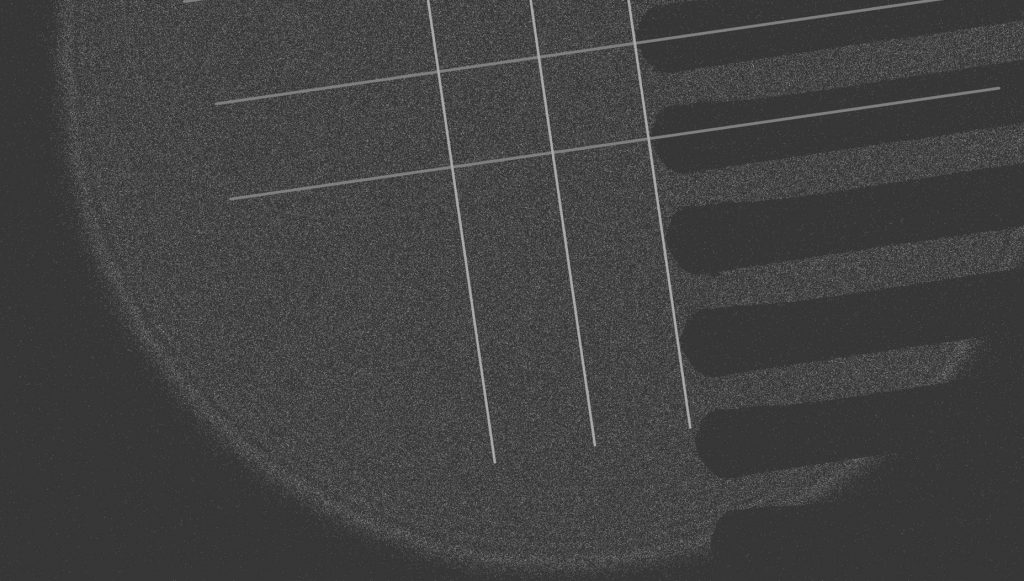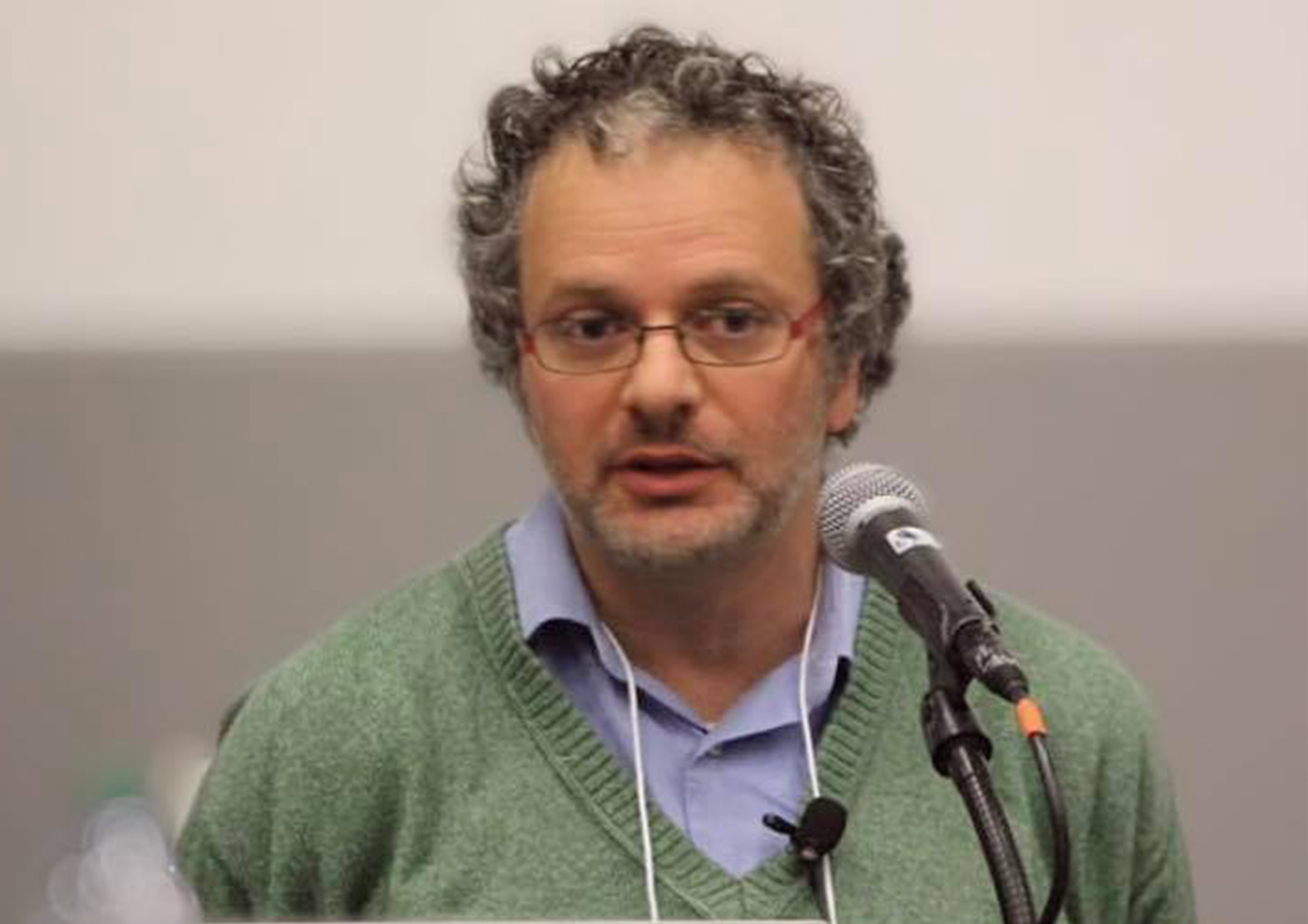
Short bio
Vincenzo Grillo is the Scientific Coordinator and Principal Investigator of Q-SORT. He graduated in physics from the University of Genova (110/110 cum laude). He received his PhD in electron microscopy at the University of Parma, while performing collaborative work with Erlangen University (Germany). In 2001 he was a visiting scientist at the Tokyo Institute of Technology working on cathodoluminescence in TEM. Since 2003 he has been working at INFM (the Italian National Institute for the Physics of Matter – now part of CNR) as a Senior Fellow researcher in electron microscopy. He has developed innovative TEM-STEM methodology and published the first quantitative use of STEM with HAADF detector for chemical analysis. He is now working on vortex beams and holographic beam generation. He and his group are now among the world’s leading groups in this sector for their work on phase holograms, large vortex beams, and the theory of spin-orbit coupling with vortex. In 2015 he was a visiting researcher at the University of Oregon. In 2016 he received the Humboldt Foundation’s Bessel research award for his work on beam shaping. Dr. Grillo is co-author of more than 100 articles and 5 book chapters. The H-index of his publications is 34.


Questions
What is your specific area of research? How would you explain it to young children?
⬤ I used to say that I look at atoms but this is not really what my job is mainly about nowadays. I would say I look at electrons and give them fancy shapes to discover new properties of materials (e.g diamonds, silicon, nanoparticles, etc.) , or even new properties of the electron itself.
How did you choose your research field? Were you inspired by someone?
⬤ I have always dreamt of a career in astrophysics. I actually have a master’s degree in particle physics, but when I finished my studies I wanted to do something different and got a PhD in microscopy. Even then I wanted to do computational physics; theory then experiments, then theory again. I don’t like to settle myself into a definite position, I’m always out to learn new things: quantum optics, artificial intelligence… maybe one day I will return again to astrophysics.
How does your life as a top scientist compare with your expectations of it when you begin studying physics?
⬤ I dreamt of a solitary life as an astrophysicist, working in some observatory in Chile with Pink Floyd in my headphones at sunset. Instead I ended up in a dark room or in front of a PC! I cannot complain, though. This work is so exciting and always new, and I have visited so many places that it comes very close to the life I dreamt about.
What traits might a child possess that indicate an interest or aptitude for your research field?
⬤ Imagination and maths, together. Yes, it requires fantasy. Physics is what we do when we model the world around us, and to model it is to imagine it in front of your eyes. If you aren’t imaginative you can have all the maths in the world, but it will not help. Another very important thing is also required: it takes years of stubborn dedication.
What are you currently working on and what is your long-term research goal?
⬤ I love to say that I am working on quantum electron optics. My true goal, though, is to demonstrate that with an electron you can do what light can do, but many times better. This is because the electron as a wave is much more interesting (and also more complicated).
Do you have an analogy to help our readers to understand your work?
⬤ It is like lantern shows or shadow puppetry. You rehearse positions with your hands, and hope to see a rabbit or a butterfly projected on the wall. The hands are our holograms that shape the figures, the final image on the wall is our beam. The shape of the hands doesn’t seem to make sense at first, but then you see the shadow projected on the wall and everything is pure beauty.
What is it that excites you about your work?
⬤ There are days when you are in front of the microscope, maybe just thinking, and suddenly you understand why something happens. You get out a sheet of paper, sketch a few numbers and think: yes, this could be the reason. Then you suddenly understand all these weird things. There are other days when you just make a calculation and the formula you find explains everything so well that you just smile. Sometimes it happens when I sleep. That moment, the ‘eureka’ moment is worth all the effort you put in.
Why is your research important?
⬤ Feynmann, maybe the second most famous physicist after Einstein and a hero to many in my field, used to say that “physics is like sex: sure, it may give some practical results, but that’s not why we do it.” Really, there are many reasons why my research is important. We are reaching the end of this generation of electron microscopy and people are starting to wonder what is next. My research poses important questions for the next generation of study: how can we extract even more information, better images, higher resolution and maybe in the process do less damage to our samples? At the same time, we have a unique opportunity to have a very controlled electron beam and we can study quantum effects, special relativity and, who knows, maybe even gravitational waves with electrons one day. So we are talking about fundamental science but also a lot of applications in biology and material science. An electron microscope is an instrument: the more powerful it gets the more research it enables.
Is there a story/anecdote about your work that you would like to share with us?
⬤ There are many! One that stands out in my memory is about my parents. In the early days of my PhD studies, I brought back some high resolution images of atoms in a crystal. In those days, images of this kind were printed on photographic negatives. My parents asked me why I had brought “fabric samples” with me. Atoms are so difficult to imagine because they are so different from everyday life that we cannot even imagine them.
Would you like to mention one or more of your most important scientific findings?
⬤ There are two things that I have enjoyed very much in my career, and they are actually opposite. In one, I worked all alone to demonstrate the effect of crystalline deformation on a particular microscopy technique called STEM. No one believed in this idea and I did theory, simulation, specimen preparation and experimentation all alone, sometimes at night, until I finally got the paper approved. The paper proved to be very interesting andended up a highly-cited document in the community. It was the sensation of being a lonely pioneer working in an obscure lab. Another is a paper where I had an idea with my colleague Stefano Frabboni. We asked ourselves how magnetic fields in a sample can be measured when they are parallel to the electron beam, something completely new. I ended up relying upon the work of many colleagues until we got it done. Two opposite experiences, both valid and rewarding.
What is it that you like to do when you aren’t working on research?
⬤ Spending time with my family first of all, but also playing music. I always find that physics and music are very much related. Shaping an electron is like composing a new song.
Is there enough support/funding for science in Europe today? What could be improved in this respect, at the national and European level?
⬤ I guess we are talking about funds. Europe is better than Italy, but still not perfect. At the national level sometimes you see a fund allocation that follows non-scientific criteria. In Italy personal connections are more important than science. But this is neither the time nor the place for such a discussion. At the European level I would try to work more on de-bureaucratizing fund applications. My humble proposal is to draft a Declaration of the Rights of the Researcher. The researcher should have the right to a call [for proposals] with at least a 10%-20% probability of funding. Moreover, in any project review process there should be some ex-post evaluation of which ones actually had success. Finally, there should be more space for fantasy and crazy ideas.
Are there gender differences in your research environment and what are current opportunities and challenges for women in science?
⬤ Not in my direct environment but I have seen some diffidence against women in certain colleagues. Moreover, there is what I call an indirect bias. Women are often less aggressive in communication and they have fewer possibilities to demonstrate their skills. Maybe, if the process of selection were less adrenaline-based and more rational, women would have more opportunities to succeed.
What inspirational message would you give young girls to inspire them to pursue a career in science?
⬤ Evaluate your skills honestly and objectively. If you find you are good enough, don’t let anybody stop you from chasing your dream.
Now for the big picture: what is your assessment of the current state of your area of research? (i.e. where do you see it going, what expectations do you have for the future, etc.)
⬤ I am part of a big project that aims to build a super microscope. In general I see the future in “quantum microscopy” as one where the deeply quantum nature of electrons is brought to bear onto the measurement of more things with fewer electrons.
Is there anything else you would like to add? (e.g. about how science is presented to the wider public, expectations about science attached to public funding, etc.)
⬤ A colleague once said that scientists need an ivory tower. We need to do our work in peace and sell our work to the world as magic. Without being so dramatic, I would really like to see both more rationality and more fantasy in the world at large, from politics to popular culture. We have the illusion that scientists during covid were listened to more carefully. Well, I hope it lasts after the storm has passed.
Thank you for your time.


